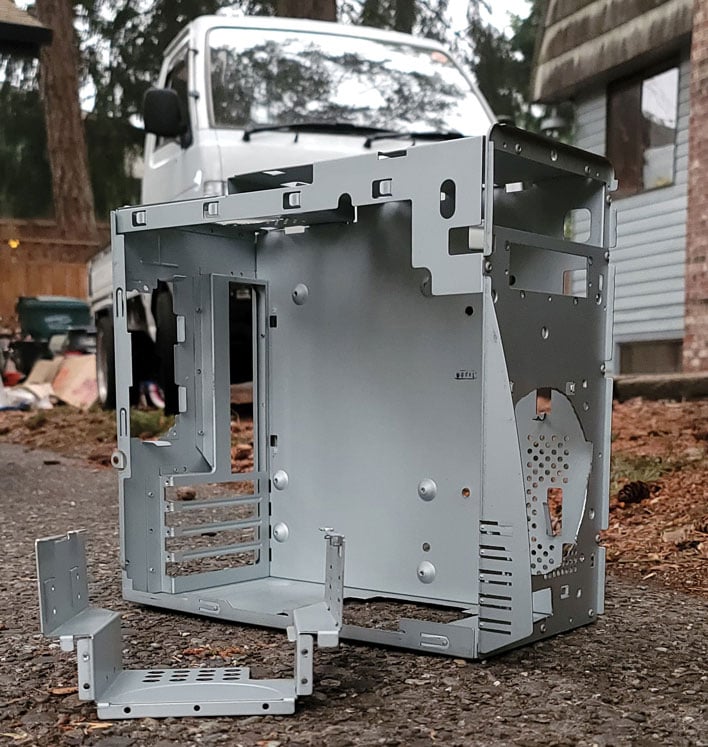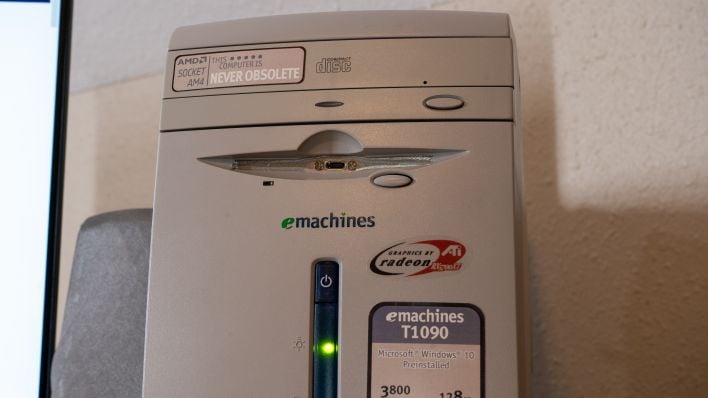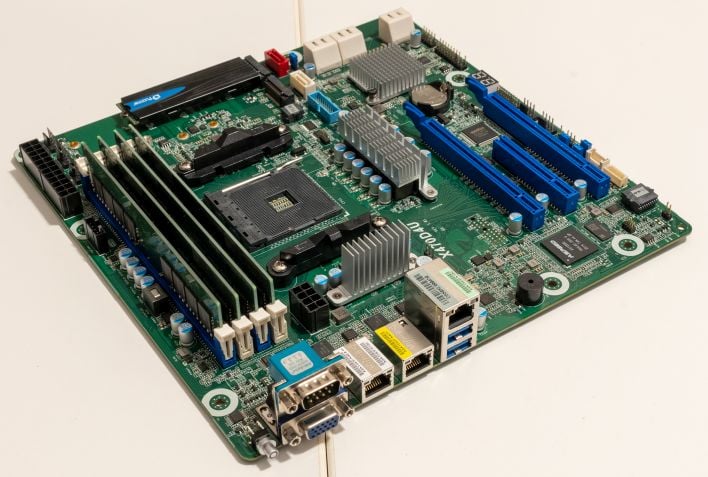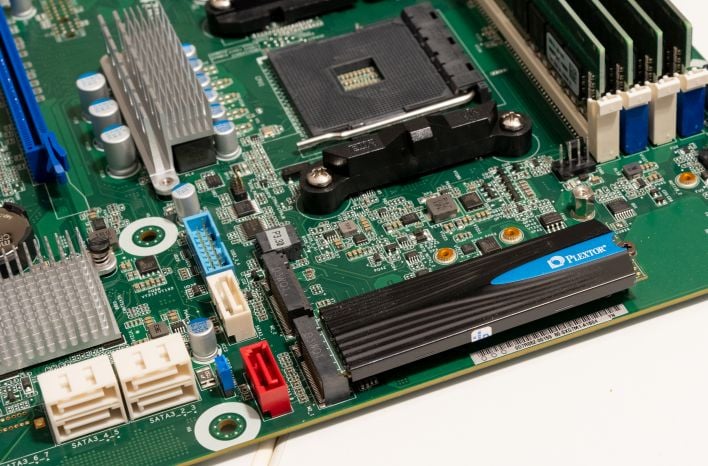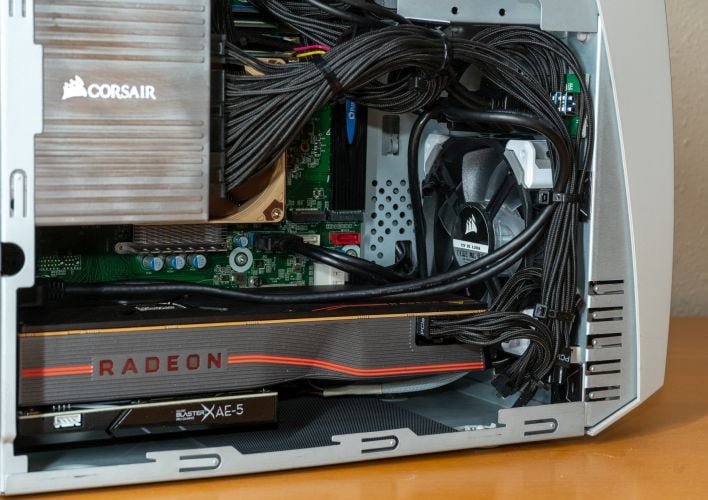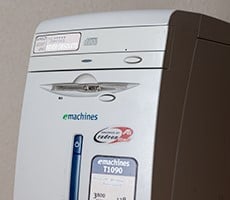Rage Against The eMachine: A Ryzen And Radeon Retro Revival
The late 90s and early 2000s was a special era for personal computing. We saw PC prices drop drastically, we moved from dial-up to broadband, and we dealt with Windows ME while waiting for XP to arrive. While some of us went the DIY route at the time, many started with a prebuilt rig purchased from a brick and mortar retailer.
One of the more notable brands during that era's race to the bottom was eMachines, founded in 1998 and later acquired by Gateway, which was then acquired by Acer. Plenty of "Never Obsolete" eMachines systems were sold to budget users back then and they helped introduce a generation to ATI Rage II and Rage Pro graphics. A Rage LT Pro AGP integrated graphics card is what I had in the first system I attempted to game on, with many hours spent in Unreal Tournament (I was a console gamer before that, spending countless hours playing Gran Turismo).
I embarked on a quest for retro PCs last year that led me down the proverbial rabbit hole. It started with a Compaq Presario 5050 mini tower, which physically resembled the PC I had when I first began exploring hardware forums (Rage3D to be exact) for modified drivers. That endeavor actually introduced me to my best friend and put me on a career path in the tech industry. Having that one Compaq PC was not enough though and I regularly began checking OfferUp, Facebook Marketplace and Craigslist for older systems.
During my search for retro computing goodness, I came across an eMachines T1090 for sale. It was not the beige “Never Obsolete” model that eMachines is infamous for, but a second-generation chassis design that was rounder and sleeker. The system was released in 2001 with Windows XP, sporting a Celeron 900 MHz, 128MB of SDRAM and Intel i810 chipset – a very low-end configuration that was already outdated by the time the system released. Cost was the major driving factor in the segment this particular eMachines competed in, however. At $474.99, or $399.99 after a $75 mail-in rebate (remember those?), the system was extremely cheap. It would cost around $585 today taking inflation into consideration, which could get you a decent budget machine nowadays.
I had no use for the hardware that came with it, but I had been itching to put together a sleeper machine since being inspired by BSMOds’ extremely well-done Juniper Networks retro-mod. Those that know me can attest that I am quite OCD about little details that most people wouldn’t care about, so it was never going to be a typical sleeper build.
Rage Against The eMachine
I paid $40 for the system, took it home and immediately began dismantling it down to the bare metal. The eMachines chassis did not have good air flow so I took a Dremel to it like it was 2001, cutting out a 120MM fan opening in front, venting the bottom and adding a 70mm top fan. Corsair provided an SF750 SFX power supply for the build, which is smaller and provides five times the wattage than the stock 150W unit.Like most modern power supplies, the Corsair SF750 is painted black and would clash with the eMachines’ grey interior. That did not work for me, so I dismantled it, had some parts sand blasted and hand sanded the others as best as I could.
The rounded case design required a custom front bezel for the optical drive. I could have stuck with the stock Samsung IDE CD-RW drive and called it a day, but where is the fun in that? I scoured eBay for a specific Samsung Blu-ray drive that appeared to have similar bezel attachment points, which was discontinued over five years ago, and took a leap of faith. The eMachines bezel was a perfect swap for the Samsung SATA Blu-ray drive. I cheated when it came to the floppy drive, though. The original plan was to use an LS120 internally with an IDE to USB adapter, but due to orientation issues with some motherboard connections, that plan was scrapped. A USB-C port was placed in the floppy slot using clear JB Weld instead.
My hardware plans revolved around an AMD Ryzen processor and Radeon graphics, because the AMD K6-2/III and ATI Rage LT Pro from this machine's era hold a special place in my heart. Since it was a standard mATX case, I thought it would be easy to shoehorn a standard motherboard in it without any headaches, but boy was I wrong. Due to how small the case is inside and out, most mATX motherboards would have RAM slots that hit the floppy drive cage (which I ended up having to notch anyways).
I spent hours scouring motherboard manufacture pages looking for the right motherboard. Then after bouncing ideas off a friend inside AMD, he planted an idea in my mind that took me down a different rabbit hole: preserving the green PCB look of that era. I took that idea and ran with it, researching modern components with green PCBs, and landed on the core components. Coincidentally, ASRock Rack, ASRock’s server and workstation brand, produces a mATX X470 motherboard with a green PCB, the X470D4U. A newer X570-based board is coming later this year, but my impatience got the best of me. The downside of using a server board is its spartan nature – there is only two USB 3.0 ports, a single USB 3.0 header and no onboard audio.
I solved the lack of USB 3.0 ports with an internal USB 3.0 hub by Sabrent, which coincidentally had a green PCB as well, and an expansion slot USB 3.0 port bracket. The adapter provides three internal USB 3.0 headers and two USB 2.0 ports. There is a SATA power connector on it, but mine broke off due to some tension on the connector. There's no new stock available of the Sabrent internal USB 3.0 hub, unfortunately.
I went with an AMD Ryzen 7 3800X processor with the cTDP set to 65 watts, paired to a Noctua NH-L9a-AM4 low-profile cooler and Thermal Grizzly Kryonaut thermal compound. Kingston ValueRAM still uses a green PCB, which is perfect for this build. The system originally came with 128MB of SDRAM, so maxing it out with 128GB seemed like the right thing to do. Hunting down a green PCB SSD was tough, but fortunately Plextor, once renowned for its CD burners and now owned by Lite-On, produces a complete line up of green PCB SSDs – a 1TB M8Se NVME SSD went into this build.
An AMD Radeon RX 5700 XT is my graphics card of choice for its 7nm Navi architecture and blower heatsink design. I could not find a modern graphics card with a green PCB, but graphics cards of that era came in varying colors, including orange, blue, red and black. I went with a blower design so heat exhausts directly out the back, since I did not expect the eMachines case to have much airflow.
Creative Labs Sound Blaster Live cards were a staple of most DIY systems of that era, so it is a no brainer for this build. I was impressed with the Sound BlasterX AE-5 I reviewed three years ago and still had it on a shelf, so it was perfect. The downside is the Sound Blaster AE-5 does not have a green PCB, but neither did the Sound Blaster Live, so the spirt of the era is still alive.

